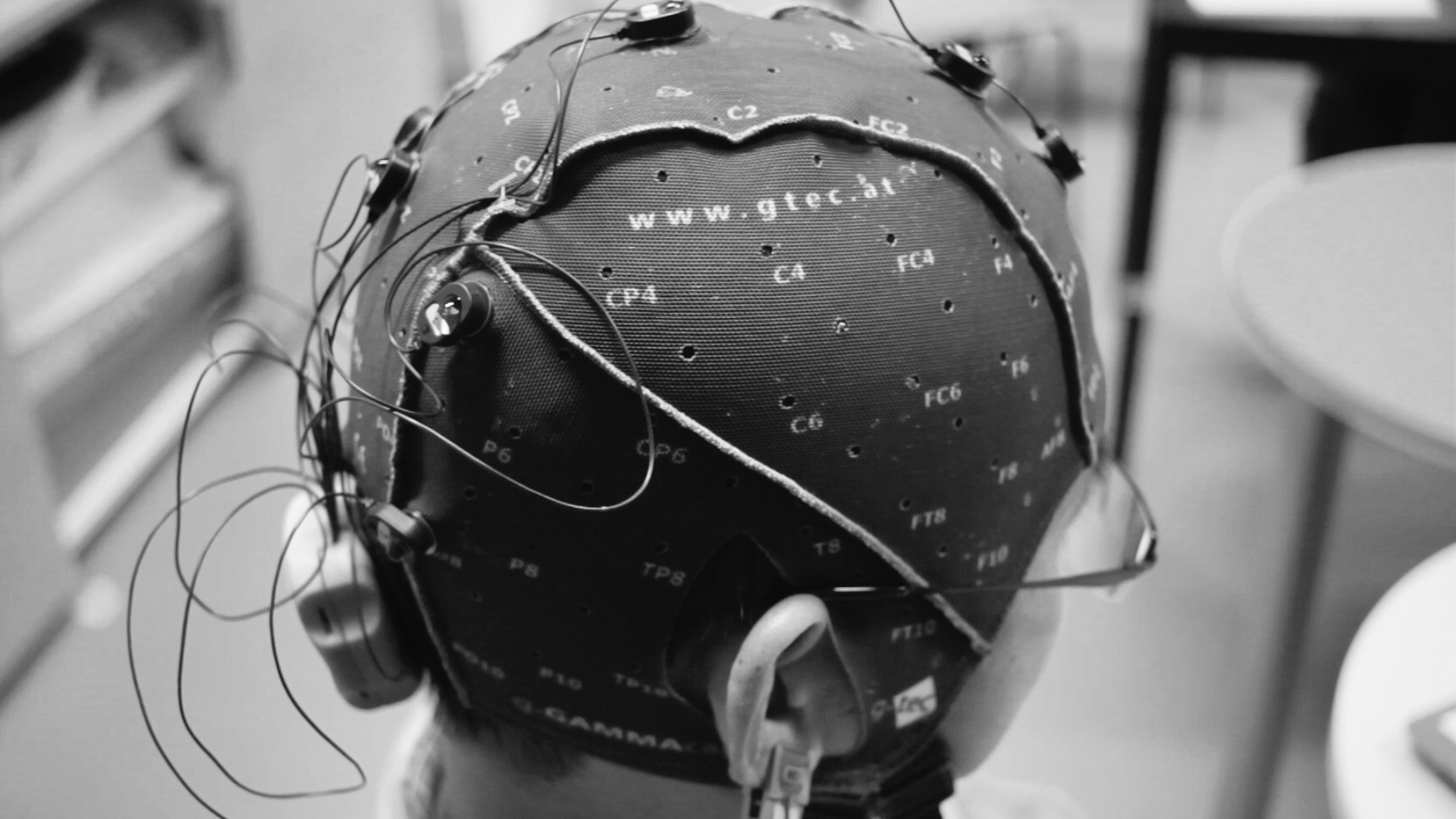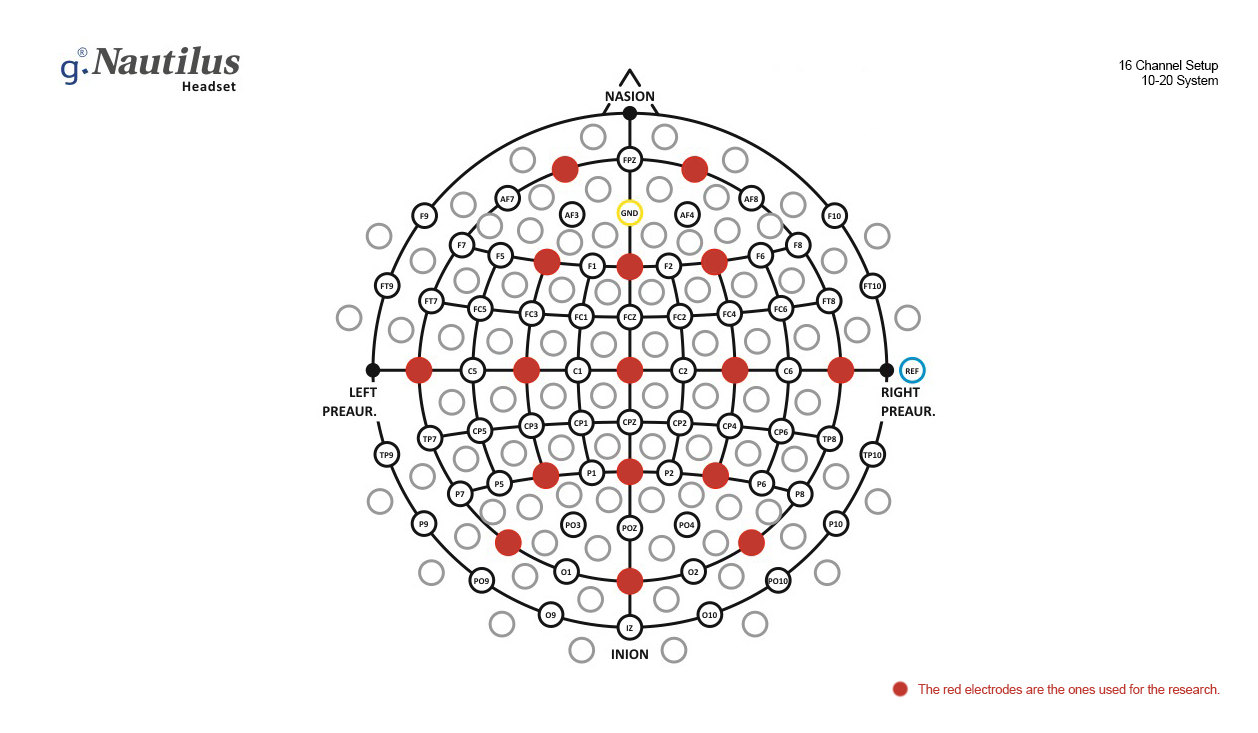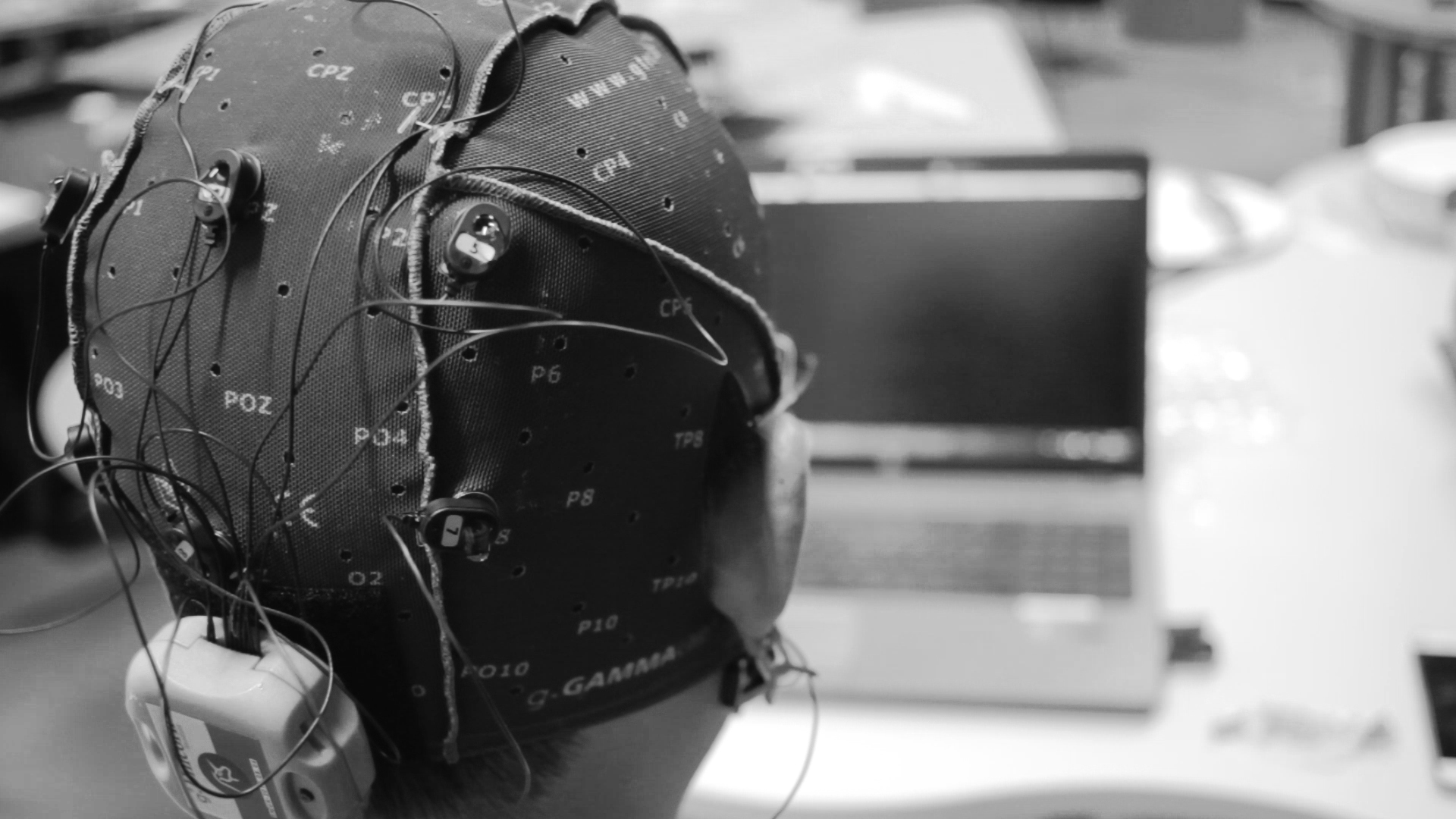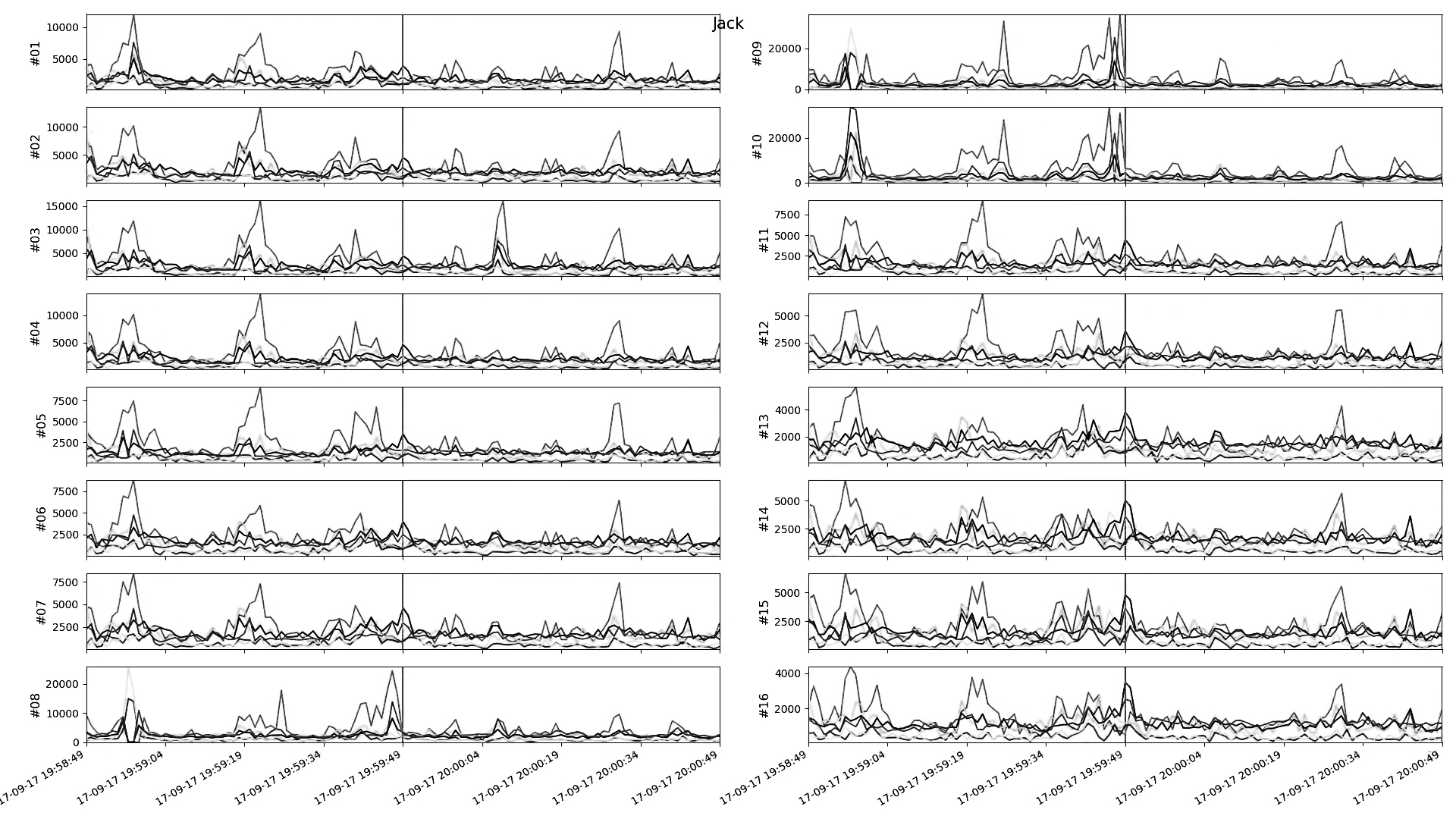2018
The Brain-Computer Interface Designer Hackathon
Institute of Neural Engineering, Graz, AT
“Brain-Computer Interface: a 16-channel g.Nautilus with gel-based electrodes reads state of mind and body person's EEG signals from the somatosensory and motor regions of the cortex.
The raw data is processed by a g.USBamp device and streamed to a PC at 256 Hz.”
Classification of oscillatory brain activity (brain waves) after Rao (2013) and Buzsaki (2006):
• Alpha-waves (alpha rhythm, 8-13 Hz) - basic neocortex rhythm in a relaxed state and/or with eyes closed. Detectable throughout the scalp, particularly in the occipital lobes.
• Mu waves (8-12 Hz) - particular kind of alpha waves detected in sensorimotor areas in the absence of movement, decrease when the subject moves.
• Beta waves (13-30 Hz) - indicate the state of alert and active concentration, detected over the parietal and frontal lobes.
• Delta waves (0.5-4 Hz) - detectable in babies and during sleep in adults.
• Theta waves (4-8 Hz) - characterize the state of “drowsiness” and light sleep in babies and adults.
• Gamma waves (30 Hz and above) - in the alert state while solving tasks involving short-term memory and multisensory integration.
• High gamma waves (70 Hz and above) - during motor activity.
Classification of brain waves according to g-tech standards (used in this project):
Brain wave types | Frequency, Hz
Delta | 0.5 - 4Theta 4 - 8
Alpha (lower) 8 - 10
Alpha (upper) 10 - 13
Beta 13 - 30
Gamma 30 - above
Process:
• got the test subject in various state of mind and body: sleep, relaxation, meditation, attention and wakefulness.
• recorded EEG with the headset with motor imagery electrode positioning.
• added Notch and Bandpass filters.
• applied (real) Fast Fourier Transform (RFFT).
• extracted dominant frequencies and cluster the data according to the classes of brain waves.
• streamed the data to custom software.
• applied control voltages to modulate analog oscillators based on ratios of brain waves classes and applied modulation based on dominant frequency for given sample.
Research and development team:
Nataliia Iakovenko
Daniel Hofstadler
Vojtěch Stoklasa
JiaHua Xu
Luis Sanz
Project initiated during BR41N.IO [The Brain-Computer Interface Designer Hackathon] in September 17-18, 2017 at the Institute of Neural Engineering in Graz, Austria.



